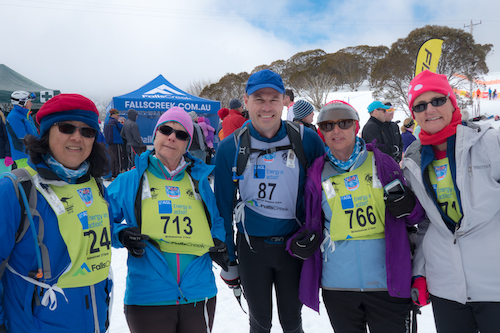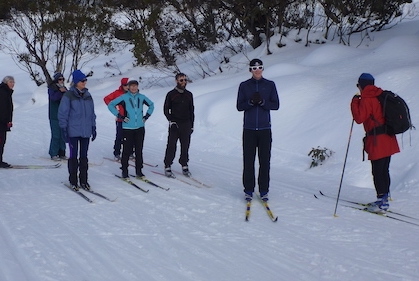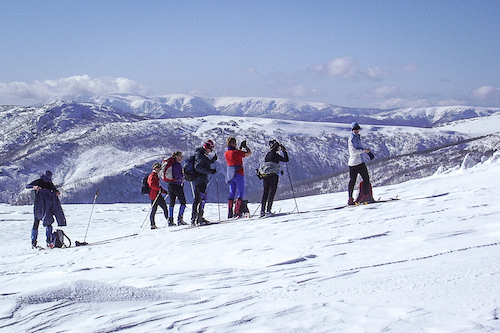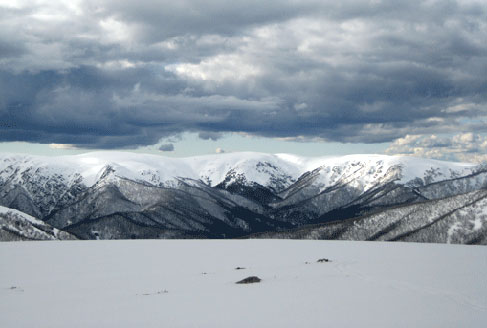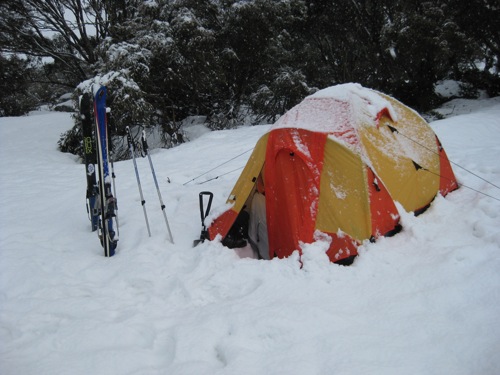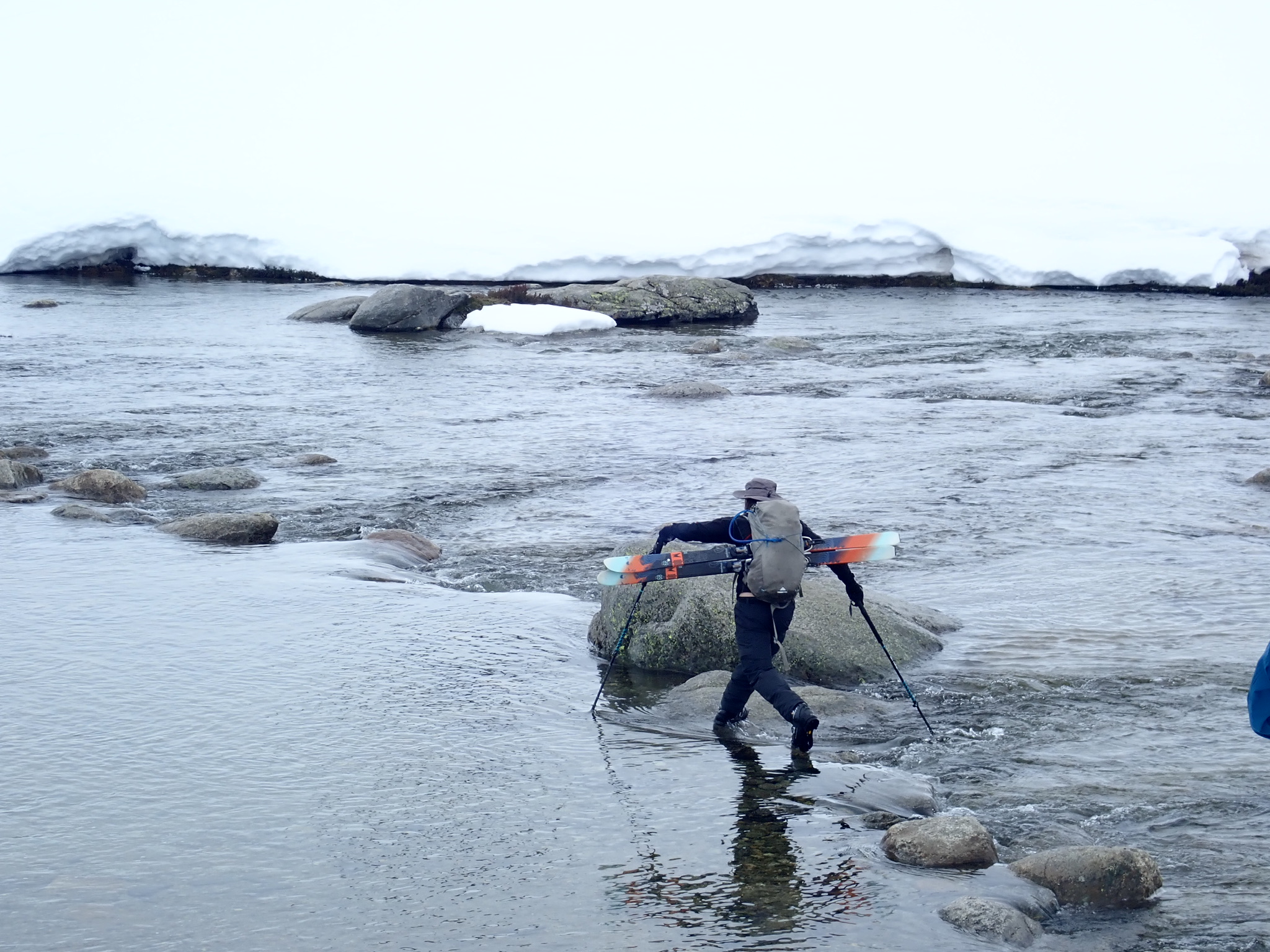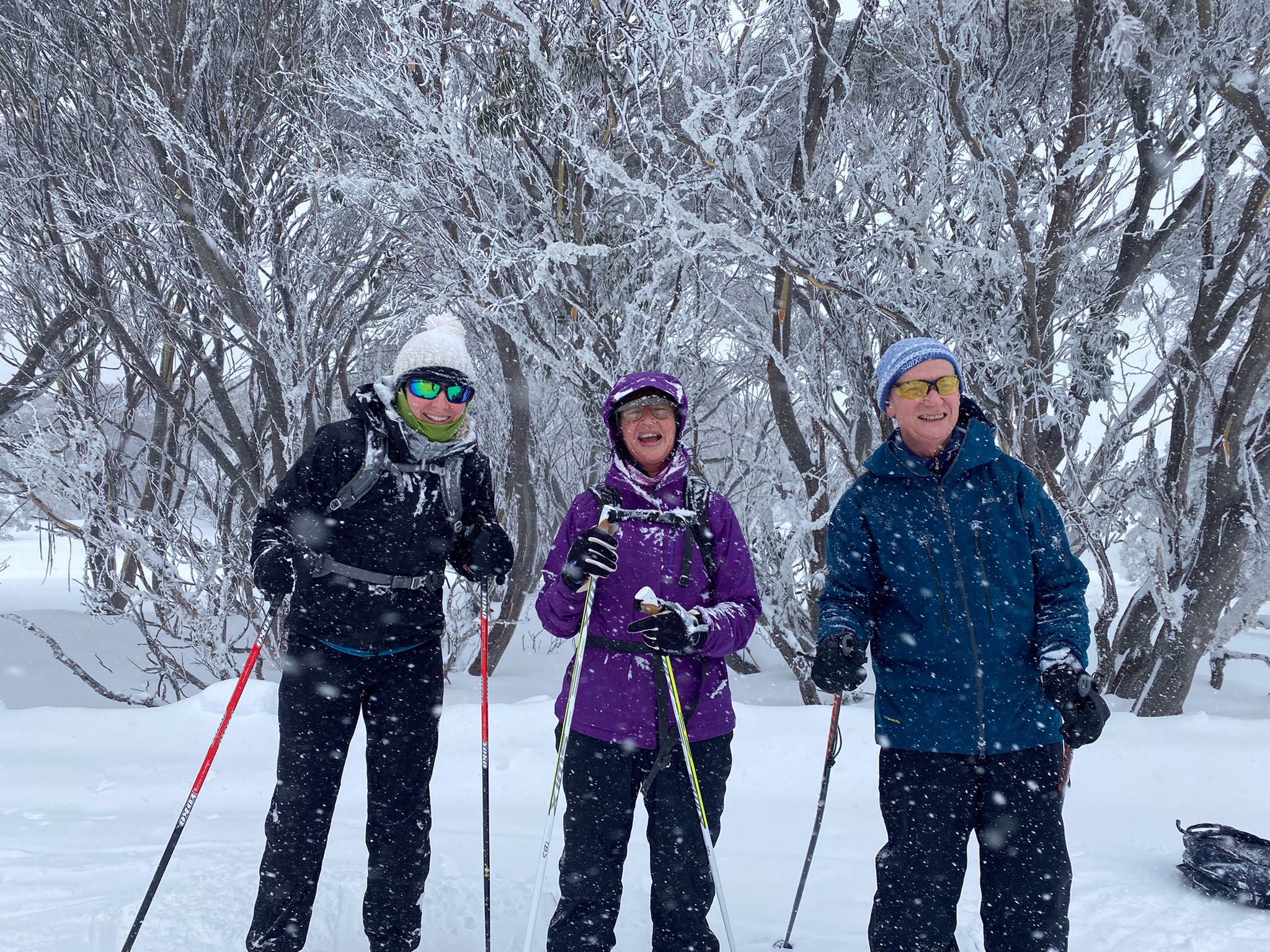So many places and styles ×

Our on-snow activities cover a wide range of skiing activities and locations. In a normal season, we run activities at several ski areas, both in Victoria and NSW. Our members skiing interests span a wide range of activities including day skiing, backcountry, snow camping, racing and Telemarking.
Ten Safety Tips for cross country skiers
- Equipment: Make sure your equipment is suitable for the terrain you are skiing. Resort skate or classic skis may be unsuitable for ungroomed snow. Outside of resort areas, back country skis with metal edges will give better control.
- Clothing: Be prepared for sudden weather changes. Always carry waterproof jacket and pants. The 3 layers system is recommended - a base layer (moisture-wicking thermal top and leggings), an insulating layer (fleece/down/wool jumper) and a water/windproof layer (raincoat, waterproof pants). Wear sunglasses to protect your eyes from UV damage and use sunscreen. Snow reflects up to 90% of radiant UV. If you need spectacle correction, make sure your prescription is up to date. Wear a thermal hat and thin thermal or wind-stopper gloves. You may wish to carry spare hat, gloves, socks and sunglasses in case these items become wet, lost or damaged. We recommend you store spare clothes in a plastic bag or ‘dry-sack’ inside your pack. Do not wear cotton or denim jeans. Cotton will not keep you warm when wet and you risk hypothermia.
- Food & Water: Skiing can be strenuous. Make sure you bring enough food and water to maintain your energy and prevent dehydration. It’s a good idea to carry extra emergency rations in case you stay out for longer than planned.
- Map: carry a map and compass. You can pick up trail maps from the resort office. For trips outside of resort areas we recommend ordnance survey maps which can be purchased from Outdoor Shops.
- Medical or First Aid: bring a small first aid kit with bandages, antiseptic, emergency foil blanket, lubricant eye drops, hand sanitiser and personal medications. Let your ski companions know if you have a medical condition.
- Whistle: bring a whistle. In the event that you are lost, use 5 long whistle bursts to call for help and 3 long bursts to respond.
- Torch: we recommend you carry a dedicated torch rather than use the torch on your mobile phone which depletes the battery. Batteries deplete quickly in cold weather so keep items with batteries in a warm dry pocket.
- Ski to your Capabilities: Do not ski out of control or in terrain that is beyond your abilities. If in doubt, take off your skis and walk. You will enjoy yourself more when you are reasonably fit. We recommend you do some off-snow training to improve your fitness.
- Ski with Friends and Keep Together: We do not recommend that you ski alone. In large groups, pick a buddy so that you can keep tabs on each other. Do not venture so far ahead or lag so far behind that you are out of sight. Wait for the others to catch-up when you come to a junction or crossroads. Before you head out, let someone (Lodge Manager or MNSC Organiser) know where you are going and when you expect to return. Give them your mobile phone number and exchange phone numbers with other members in your party. We recommend that you carry the phone number for the Ski Patrol and download the Emergency+App on your phone. If touring in in areas where mobile phone coverage is poor, you may wish to bring a PLB (Personal Locator Beacon) which operates via satellite to call for emergency assistance.
- Carry a safety card with your Name, Date of Birth, your medications, medical conditions and the phone number of your Emergency Contact. Store the card in a zip-lock bag to keep it dry and keep it at the back of your pack.
Finally Have Fun! Now that you are well prepared you can Have Fun Skiing Safely!

